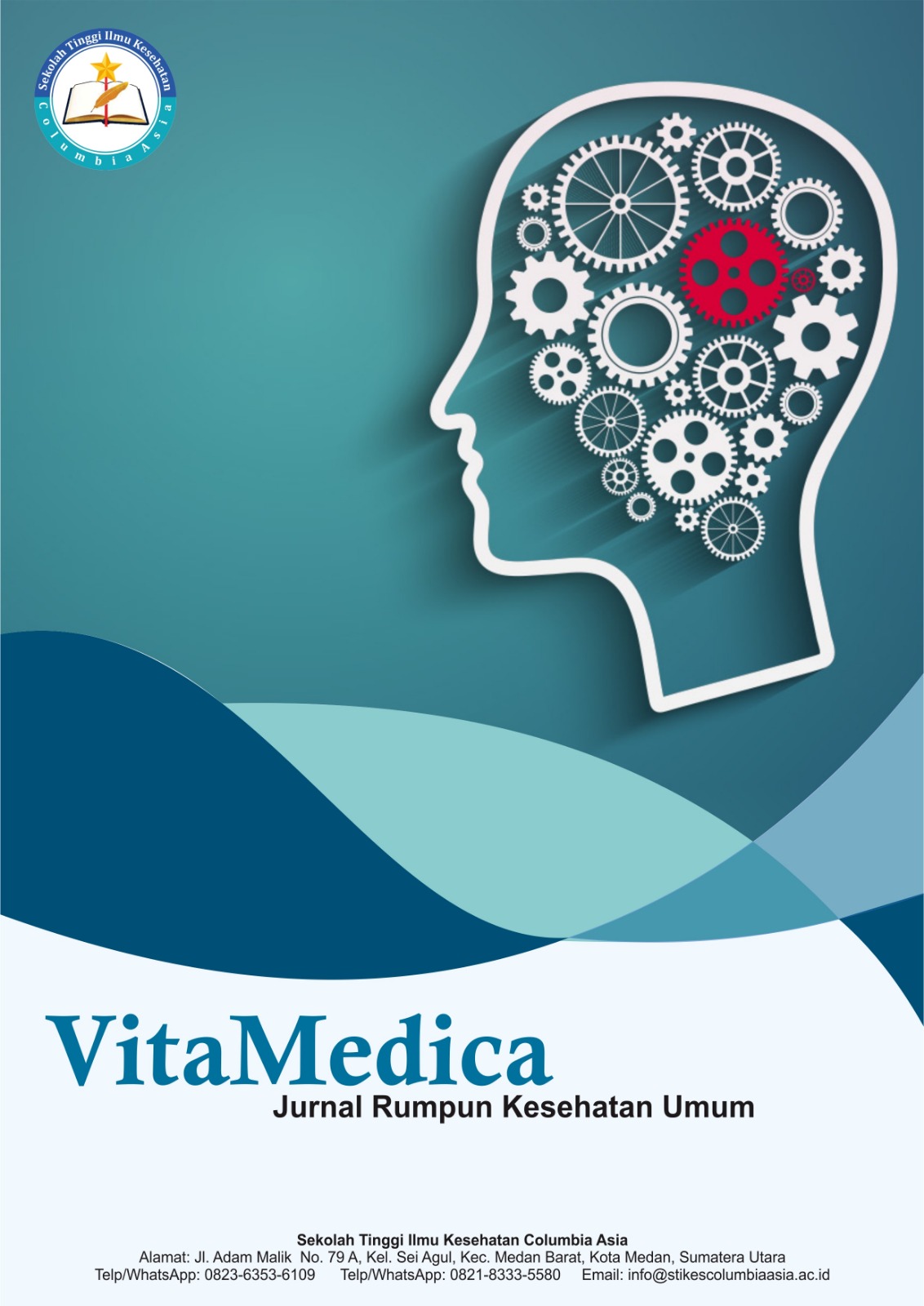Faktor Lingkungan Dan Kejadian Diare Pada Balita Di Puskesmas Darussalam
DOI:
https://doi.org/10.62027/vitamedica.v3i2.556Keywords:
Diarrhea, children under five, environmental factors, sanitationAbstract
Background: Diarrhea remains one of the leading causes of morbidity and mortality among children under five in Indonesia. Household environmental conditions, such as water quality, latrine sanitation, waste management, and environmental cleanliness, are important risk factors influencing the incidence of diarrhea. Darussalam Health Center is one of the working areas with a relatively high number of diarrhea cases among children under five. Objective: This study aims to analyze the relationship between environmental factors and the incidence of diarrhea among children under five in the working area of Darussalam Health Center. Methods: This study employed an observational analytic design with a cross-sectional approach. A total of 120 children under five were selected using purposive sampling based on inclusion criteria. Data were collected through interviews using a structured questionnaire and observation of household environmental conditions. Data analysis was performed using the chi-square test and logistic regression. Results: The incidence of diarrhea among children under five was 32.5%. Environmental factors significantly associated with diarrhea were water quality (p = 0.001; OR = 3.98; 95% CI = 1.82–8.71), latrine sanitation (p = 0.004; OR = 3.21; 95% CI = 1.45–7.09), and waste management (p = 0.012; OR = 2.54; 95% CI = 1.22–5.28). Lighting and home ventilation factors were not significantly related. Conclusion: Environmental factors, particularly water quality, sanitation, and waste management, are strongly associated with the incidence of diarrhea among children under five in the working area of Darussalam Health Center.
References
Kementerian Kesehatan RI. (2021). Profil Kesehatan Indonesia 2020. Jakarta: Kemenkes RI.
Badan Pusat Statistik. (2020). Statistik Kesehatan Lingkungan Rumah Tangga Indonesia. Jakarta: BPS.
World Health Organization. (2017). Diarrhoeal disease. Retrieved from https://www.who.int/news-room/fact-sheets/detail/diarrhoeal-disease.
Prasetyo, D. S., & Handayani, T. (2019). Hubungan kualitas air bersih dan sanitasi dengan kejadian diare pada balita. Jurnal Kesehatan Lingkungan Indonesia, 18(2), 120–128. https://doi.org/10.14710/jkli.18.2.120-128.
Hidayat, R., & Sari, M. P. (2020). Faktor lingkungan dan perilaku ibu terhadap kejadian diare pada balita. Jurnal Kesehatan Masyarakat Andalas, 14(1), 45–52. https://doi.org/10.24893/jkma.14.1.45-52.
Susilowati, E., & Wulandari, A. (2018). Hubungan pengelolaan sampah rumah tangga dengan kejadian diare. Jurnal Kesehatan Masyarakat Nasional, 12(3), 143–150.
UNICEF & WHO. (2019). Progress on household drinking water, sanitation and hygiene 2000–2017: Special focus on inequalities. New York: UNICEF and WHO.
Rahmawati, N., & Putra, A. P. (2021). Hubungan kondisi sanitasi jamban dengan kejadian diare pada anak balita. Jurnal Ilmiah Kesehatan, 9(1), 11–18. https://doi.org/10.36089/jik.v9i1.321
Sulastri, Y., & Nugroho, A. (2017). Kualitas lingkungan dan perilaku higienis sebagai faktor risiko diare balita. Jurnal Epidemiologi Kesehatan Indonesia, 1(2), 75–83.
World Health Organization. (2018). Guidelines on sanitation and health. Geneva: WHO.
Downloads
Published
How to Cite
Issue
Section
License
Copyright (c) 2025 VitaMedica : Jurnal Rumpun Kesehatan Umum

This work is licensed under a Creative Commons Attribution-ShareAlike 4.0 International License.







